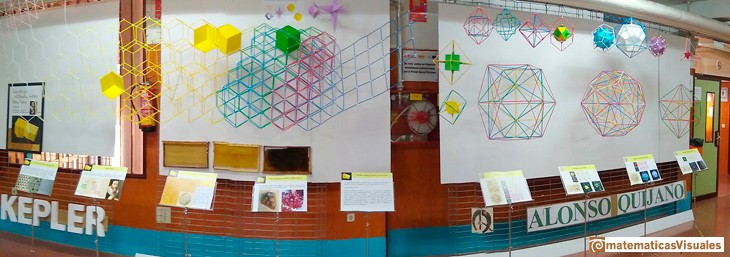- About MAA
- Membership
- MAA Publications
- Periodicals
- Blogs
- MAA Book Series
- MAA Press (an imprint of the AMS)
- MAA Notes
- MAA Reviews
- Mathematical Communication
- Information for Libraries
- Author Resources
- Advertise with MAA
- Meetings
- Competitions
- Programs
- Communities
- MAA Sections
- SIGMAA
- MAA Connect
- Students
- MAA Awards
- Awards Booklets
- Writing Awards
- Teaching Awards
- Service Awards
- Research Awards
- Lecture Awards
- Putnam Competition Individual and Team Winners
- D. E. Shaw Group AMC 8 Awards & Certificates
- Maryam Mirzakhani AMC 10 A Awards & Certificates
- Two Sigma AMC 10 B Awards & Certificates
- Jane Street AMC 12 A Awards & Certificates
- Akamai AMC 12 B Awards & Certificates
- High School Teachers
- News
You are here
Kepler and the Rhombic Dodecahedron: Overview of Article Structure and Its Use with Students
The materials and activities that we present in this article have been tested in the classroom and in workshops with students in the 11–16 year age group. Both the text and the accompanying activities that follow are adapted to this target audience. Teachers of these and other age groups can use the article text as a basic (written or spoken) script for implementing these activities in their classroom, or they may adapt the associated materials as appropriate for use with their students.

Figure 2. Panoramic of the exhibition ‘Kepler, honeybees, and the rhombic dodecahedron’
(Alcalá de Henares, Spain, 2020).
The next four sections form the core of this article, as they provide the basis for a classroom project or student workshop session of length 90–120 minutes:
- Introducing the Rhombic Dodecahedron
- Kepler and His Time
- Honeycombs and the Discovery of the Rhombic Dodecahedron
- Building a Rhombic Dodecahedron
After a short presentation of the rhombic dodecahedron, we talk about its discoverer, Johannes Kepler, and the historical context in which he worked. The description of how bees build their cells that comes next is always fascinating to students and exposes some interesting properties of this polyhedron. Following that introduction, students can construct a paperboard rhombic dodecahedron as well as a model of a bee cell. Each student will then have their own beautiful polyhedron that can serve to remind them of some of its properties. Building polyhedra using simple templates is the objective of this activity.
I can report from my own experience that a workshop based on the material presented in these four sections is always a success with young students. Honeybees are inherently appealing, and the models are simple, beautiful, interesting—and easy to build. An effective option for finishing this session is to glue all of the students’ rhombic dodecahedra together in order to demonstrate how this polyhedron tessellates space.
The subsequent two sections of the article focus on activities related to the technical problem of how best to pack cannonballs. These activities provide the basis for a second component of an extended classroom project or an additional workshop session of length 90 minutes:
When Kepler studied the optimal packing of spheres, he found that the rhombic dodecahedron can be generated by compressing thirteen cannonballs together. It is very easy to reproduce this experiment using clay balls, and the result astonishes the audience. After this experiment, we are in a wonderful position to talk about another beautiful polyhedron that interested Kepler: the cuboctahedron. The dual relationship between these two polyhedra can also be demonstrated with physical models.
The final three sections of the article then take up the art theme and provide the basis for a third component for a classroom project or an additional workshop session of length 90 minutes:
- Renaissance Artists – They Almost Got It!
- The Rhombic Dodecahedron as a Cube with Pyramids
- Building a Cube and an Octahedron Inside a Rhombic Dodecahedron
The story of the explosion of interest in polyhedra that occurred after the 15th century is a good opportunity to mix history, art, and geometry. (See Cromwell's Polyhedra [1997] and Pedoe's Geometry and the Liberal Arts [1978].) Kepler’s insight that the rhombic dodecahedron can be viewed as a cube topped with pyramids allows students to learn interesting geometric properties of this polyhedron, such as the measures of its diagonals, edges, angles, and volume. Since the prerequisites for these various computations range from elementary plane geometry (including the Pythagorean Theorem) to basic trigonometry, the technical details can be presented simply by the instructor or explored in more depth by those students who have the necessary mathematical background.
Roberto Cardil (matematicasVisuales), "Kepler and the Rhombic Dodecahedron: Overview of Article Structure and Its Use with Students," Convergence (March 2022)




